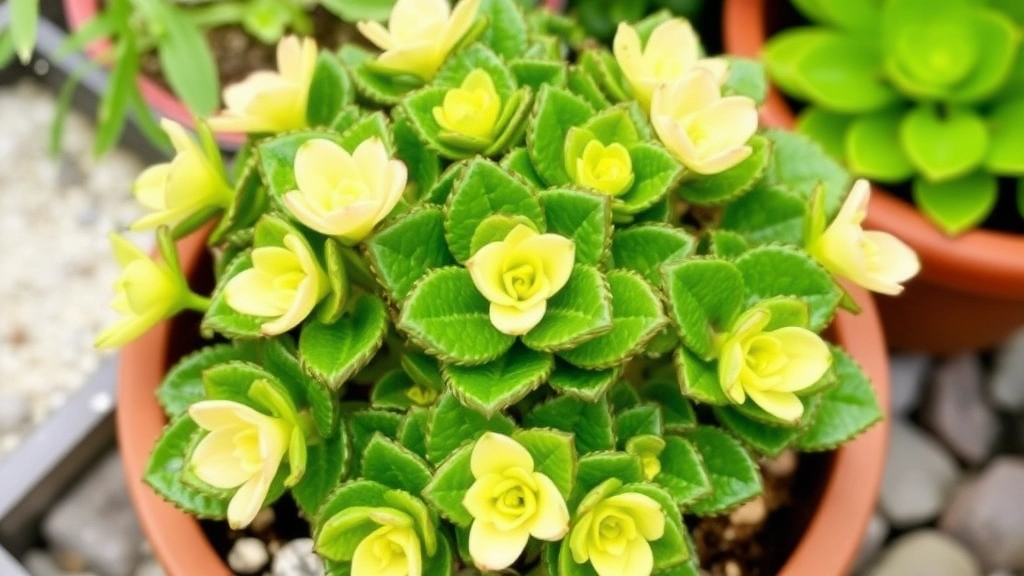How to Care for Your Kalanchoe
Wondering how to care for your Kalanchoe? One common question is: do you water a Kalanchoe from the top or bottom? Whether you’re a seasoned plant parent or a newbie, knowing the right watering technique can make all the difference in keeping your Kalanchoe healthy and vibrant.
Let’s dive into the best practices for watering this popular succulent. By understanding the pros and cons of top and bottom watering, you can ensure your Kalanchoe thrives. Stick around to get the scoop on how to keep your plant happy and avoid common pitfalls.
Top Watering Method for Kalanchoe
When it comes to keeping your Kalanchoe healthy, the choice of watering method can make a significant difference.
Top watering is a popular approach among plant enthusiasts. It involves pouring water directly onto the soil surface, allowing it to seep down to the roots.
II. Bottom Watering Method for Kalanchoe
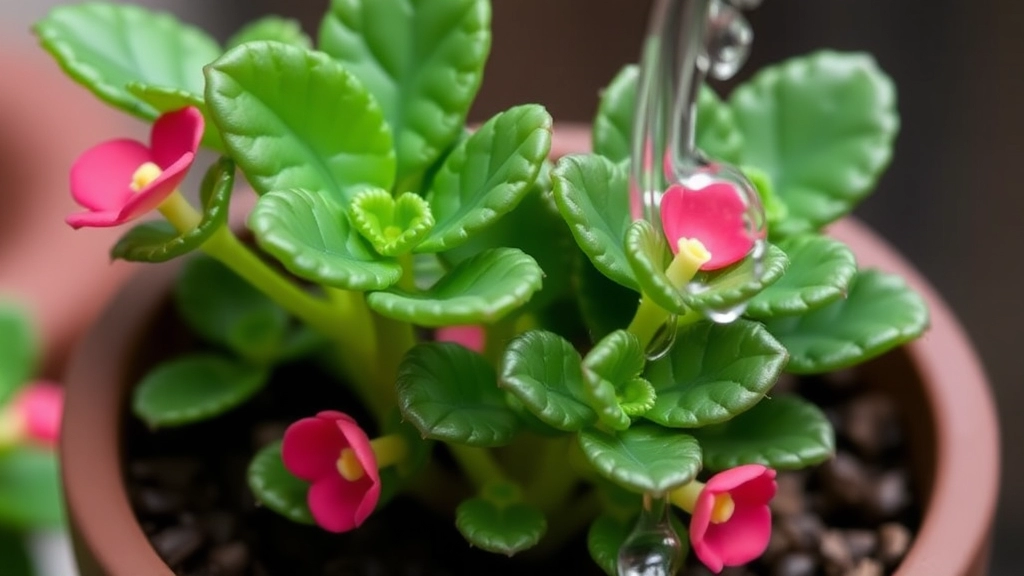
So, you’ve heard about bottom watering and you’re curious if it’s the right fit for your Kalanchoe.
Bottom watering is a fantastic way to ensure your plant gets the moisture it needs without the risk of over-saturating the soil.
What is Bottom Watering?
Essentially, this method involves placing your Kalanchoe pot in a tray or basin filled with water. The plant absorbs moisture from the bottom up through the drainage holes.
Why Choose Bottom Watering?
- Prevents Overwatering: Since the roots draw moisture as needed, it reduces the chances of waterlogging.
- Encourages Healthy Root Growth: This method promotes deeper root systems as they search for water.
- Less Mess: You won’t get soil splatters on your surfaces, keeping things tidy.
How to Bottom Water Your Kalanchoe
- Fill a Tray: Grab a shallow tray or basin and fill it with a few inches of water.
- Place the Pot: Set your Kalanchoe pot in the tray, ensuring the drainage holes are submerged.
- Wait: Let it sit for about 30 minutes. You’ll see the soil start to darken as it absorbs the water.
- Remove and Drain: After half an hour, take the pot out and let any excess water drain away.
Tips for Effective Bottom Watering
- Frequency: Bottom watering is great for when the topsoil feels dry.
- Check the Soil: Always ensure the top layer is dry before you bottom water again.
- Use Quality Soil: Well-draining soil is key to making this method work effectively.
Pros and Cons of Top Watering
When considering how to effectively water your Kalanchoe, the top watering method often comes to mind. This approach is popular among many plant enthusiasts, but it’s essential to weigh its advantages and disadvantages.
Pros of Top Watering
- Direct Water Access: Water is delivered directly to the soil surface, allowing for immediate absorption.
- Visual Confirmation: You can easily see how much water you’re giving your plant, which helps prevent overwatering.
- Soil Moisture Control: This method allows you to monitor the moisture level more effectively, ensuring the soil remains adequately hydrated without becoming soggy.
- Convenience: Top watering is straightforward and doesn’t require additional tools or setup.
Cons of Top Watering
- Risk of Overwatering: It’s easy to pour too much water, leading to soggy soil and potential root rot. For tips on preventing this, check out the causes and solutions for dying Kalanchoe leaves.
- Surface Drying: The top layer of soil can dry out quickly, which may mislead you into thinking the plant needs more water.
- Salt Buildup: Minerals can accumulate on the soil surface, which may harm the plant over time. To avoid this issue, consider reading about the best soil for Kalanchoe care.
- Inconsistent Moisture Distribution: Water may not reach the deeper roots effectively, leading to uneven moisture levels.
Pros and Cons of Bottom Watering
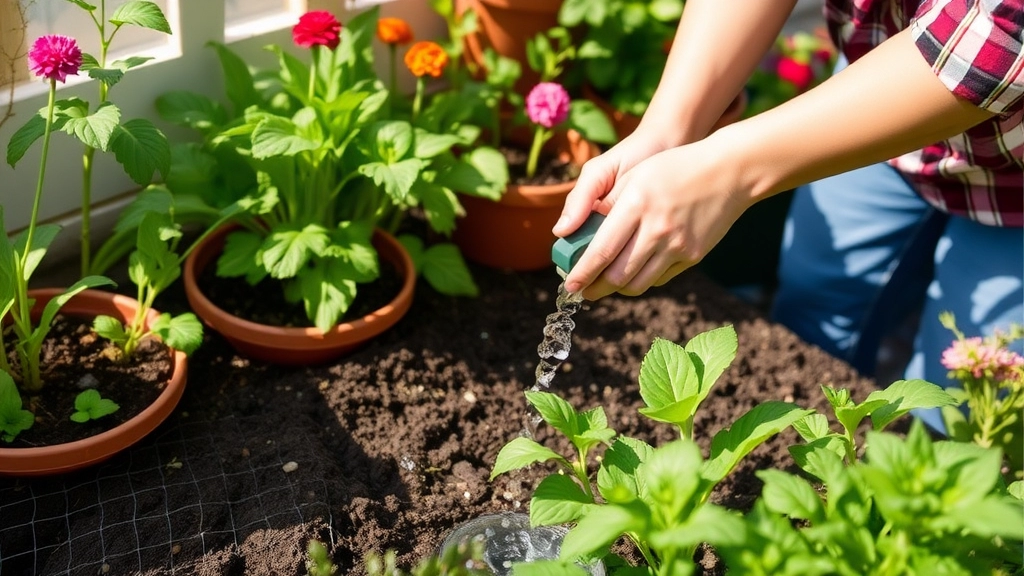
As we explore effective watering methods for Kalanchoe, it’s essential to weigh the advantages and disadvantages of bottom watering, a technique that many plant enthusiasts swear by.
Pros of Bottom Watering
- Even Moisture Distribution: Bottom watering allows the soil to absorb water evenly, which can prevent dry spots. This is particularly beneficial for Kalanchoe, as they thrive in consistent moisture.
- Reduced Risk of Overwatering: By controlling the water intake, bottom watering can help prevent overwatering, a common issue for Kalanchoe owners. The plant takes up only what it needs.
- Cleaner Foliage: Since water is added from the bottom, there’s less chance of wetting the leaves, which can help prevent fungal diseases and keep your plant looking its best.
- Encourages Deep Root Growth: This method encourages roots to grow deeper in search of water, leading to a healthier and more resilient plant.
Cons of Bottom Watering
- Time-Consuming: Bottom watering can take longer than top watering, as it may require more patience for the soil to soak up the moisture.
- Difficulty in Monitoring Soil Moisture: It can be challenging to gauge how wet the soil is, making it easier to either underwater or overwater unintentionally.
- Potential for Salt Buildup: If you’re using fertilisers, salts can accumulate at the bottom of the pot, which may negatively impact your Kalanchoe’s health over time.
- Not Suitable for All Pot Types: Some pots may not be designed for bottom watering, limiting your options if you have specific aesthetic preferences.
Understanding the signs of overwatering and underwatering is crucial for maintaining a healthy Kalanchoe. These plants are resilient but can suffer if their watering needs aren’t met.
**Signs of Overwatering**
Overwatering can lead to root rot and other issues. Here are some telltale signs:
– **Yellowing Leaves**: If the leaves are turning yellow, it’s often a sign that the roots are sitting in water. For more information on why your Kalanchoe leaves might be turning yellow, check out [this guide](https://planthq.org/why-kalanchoe-bottom-leaves-turn-yellow-causes-solutions/).
– **Wilting**: Surprisingly, overwatered plants can also wilt due to root damage.
– **Mushy Stems**: Soft or mushy stems indicate that the plant is struggling with excess moisture.
– **Foul Odour**: A rotten smell from the soil can signal root rot.
**Signs of Underwatering**
On the other hand, underwatering can hinder growth and lead to stress. Look for these signs:
– **Crispy Leaves**: Dry, crispy leaves indicate that the plant isn’t getting enough water. If your Kalanchoe leaves are drying out, you might find useful tips [here](https://planthq.org/why-are-my-kalanchoe-leaves-drying-out-causes-and-fixes/).
– **Leaf Drop**: If leaves are falling off, it may be a sign of dehydration.
– **Shrivelled Appearance**: The plant may look shrivelled or shrunk due to lack of moisture.
– **Brown Leaf Tips**: Brown tips on the leaves suggest that the plant is thirsty.
Best Practices for Watering Kalanchoe
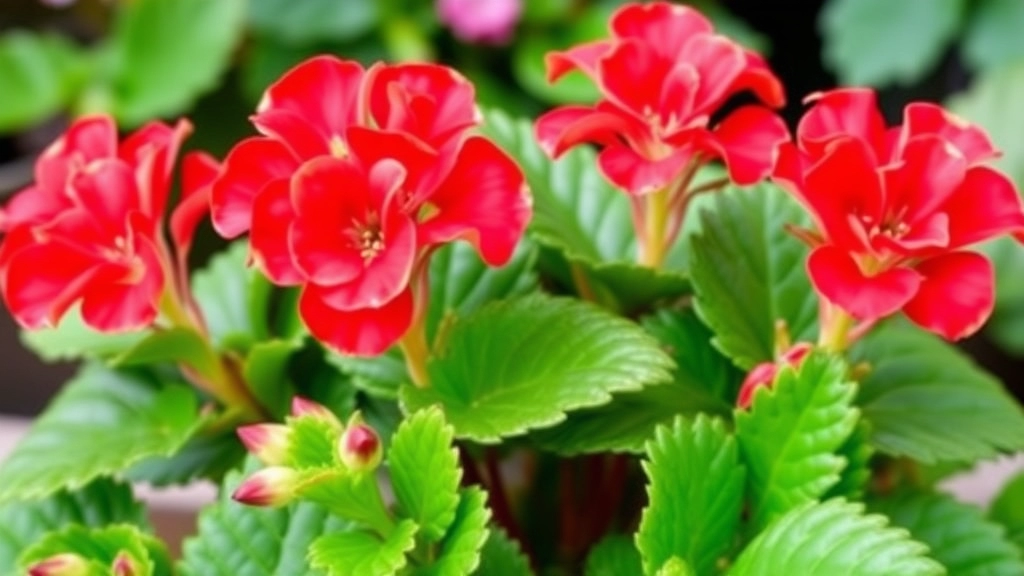
When it comes to watering your Kalanchoe, it’s easy to feel a bit overwhelmed.
How much water is too much?
When should I water again?
Let’s break it down into some straightforward best practices that will help keep your plant thriving.
Timing is Everything
- Check the Soil: Stick your finger about an inch into the soil. If it feels dry, it’s time to water. If it’s still moist, hold off for a bit.
- Water in the Morning: Early watering helps prevent fungal diseases and allows the plant to absorb moisture before the heat of the day kicks in.
Watering Technique
- Top Watering: If you’re using the top watering method, pour water slowly around the base of the plant. Avoid pouring directly onto the leaves to prevent rot.
- Bottom Watering: For bottom watering, fill a tray with water and place your pot in it. Let it soak for about 15-20 minutes, then remove it to drain any excess water.
Water Quality
- Use Room Temperature Water: Cold water can shock your Kalanchoe. Let it sit out for a bit before using it.
- Filtered Water: If possible, use filtered or rainwater. It’s gentler on your plant compared to tap water, which may contain chemicals.
Potting Considerations
- Drainage is Key: Ensure your pot has drainage holes. This prevents water from sitting at the bottom, which can lead to root rot.
- Soil Type: A well-draining soil mix is essential. Cactus or succulent soil works great for Kalanchoe.
Observe and Adjust
- Seasonal Changes: Your watering routine may need to shift with the seasons. In winter, Kalanchoe needs less water due to its dormant state.
- Watch for Signs: Keep an eye on your plant. Yellowing leaves might mean overwatering, while shriveled leaves could indicate underwatering.
Seasonal Watering Tips for Kalanchoe
As we delve into the seasonal watering tips for Kalanchoe, it’s essential to understand how different times of the year can influence your plant’s hydration needs.
Spring and Summer
During the growing season, Kalanchoe thrives and requires more frequent watering. Here are some tips:
- Check Soil Moisture: Water when the top inch of soil is dry.
- Increase Frequency: Depending on the temperature, you may need to water every 1-2 weeks.
- Morning Watering: Aim to water in the morning to allow excess moisture to evaporate during the day.
Autumn
As temperatures begin to drop, your Kalanchoe will enter a semi-dormant phase. Adjust your watering accordingly:
- Reduce Frequency: Water every 2-3 weeks as the plant’s growth slows.
- Monitor Light Levels: Less sunlight may mean slower drying times for the soil.
Winter
In winter, Kalanchoe requires minimal watering. Overwatering can lead to root rot during this dormant phase:
- Water Sparingly: Only water when the soil is completely dry, typically every 3-4 weeks.
- Avoid Cold Water: Use room temperature water to avoid shocking the plant.
General Tips for Seasonal Changes
- Observe Your Plant: Changes in leaf color or texture can indicate watering needs.
- Adjust for Humidity: Indoor heating can dry out the air, so monitor soil moisture more closely during winter.
- Use a Moisture Meter: This tool can help you gauge when to water, especially during seasonal transitions.
For more detailed care tips, you might find our guide to Kalanchoe Mother of Thousands care and our Kalanchoe Chocolate Soldier care guide particularly helpful.
Tools and Accessories for Effective Watering
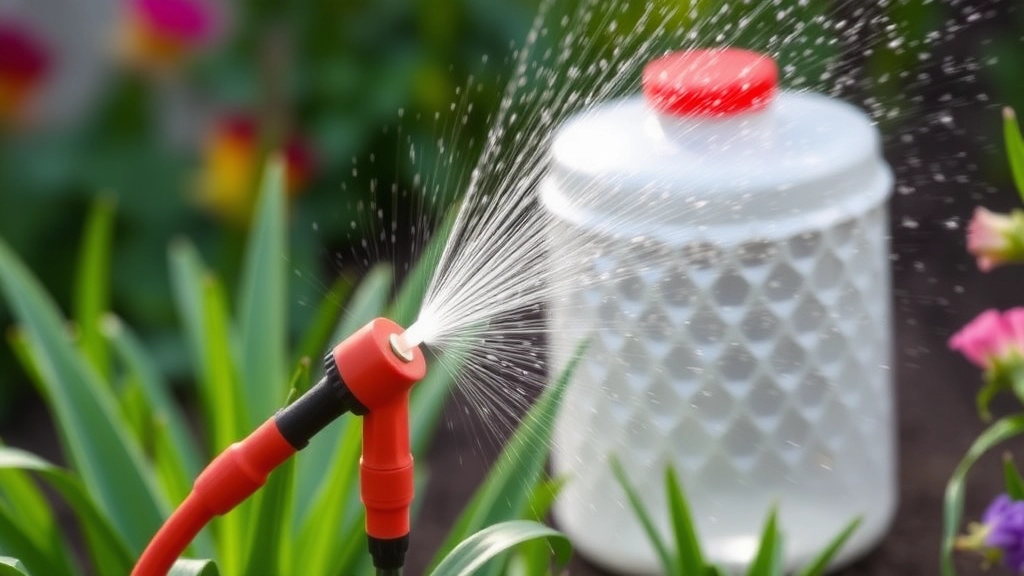
So, you’ve got your Kalanchoe all set up, and now you’re wondering how to keep it thriving. The right tools can make all the difference in ensuring your plant gets just the right amount of water.
Essential Tools for Watering Kalanchoe
- Watering Can
– Choose one with a long spout for precision.
– It helps you direct water exactly where it’s needed. - Moisture Meter
– This handy gadget takes the guesswork out of watering.
– It tells you whether your soil is too dry or just right. - Spray Bottle
– Perfect for misting the leaves occasionally.
– Helps maintain humidity without soaking the soil. - Draining Tray
– Place it under your pot to catch excess water.
– Prevents root rot by ensuring proper drainage. - Soil Scoop
– Makes it easy to check soil moisture levels.
– A quick way to dig a little into the soil without disturbing the roots.
Accessories to Consider
- Self-Watering Planters
– These are fantastic if you travel or forget to water.
– They slowly release water as the plant needs it. - Watering Spike
– Insert it into the soil and fill it with water.
– It slowly releases moisture, perfect for busy days. - Fertiliser Injector
– If you want to give your Kalanchoe a nutrient boost while watering, this is a game-changer.
– Mix fertiliser with water and let it do its thing.
Why These Tools Matter
Using the right tools not only simplifies your watering routine but also helps you avoid common mistakes. A moisture meter can prevent overwatering, while a good watering can ensures even distribution.
Common Watering Mistakes to Avoid
When caring for your Kalanchoe, understanding common watering mistakes can be a game-changer. Many of us have faced the frustration of seeing our plants wilt or develop issues, often due to improper watering practices. Let’s dive into some of these pitfalls to ensure your Kalanchoe thrives.
FAQs for Watering Kalanchoe
Do you water a Kalanchoe from the top or bottom?
Both methods are viable, but bottom watering is often recommended to prevent overwatering and promote healthy root growth. Top watering can be used as well, provided you avoid wetting the leaves.
What is bottom watering, and how does it benefit my Kalanchoe?
Bottom watering involves placing your Kalanchoe pot in a tray of water, allowing the plant to absorb moisture through the drainage holes. This method prevents overwatering, encourages deep root growth, and keeps the foliage clean.
How often should I bottom water my Kalanchoe?
Bottom water your Kalanchoe when the topsoil feels dry. Always check the soil moisture before watering again to avoid overwatering.
What are the pros and cons of bottom watering?
Pros: Even moisture distribution, reduced risk of overwatering, cleaner foliage, and encouraged deep root growth.
Cons: Time-consuming, difficulty in monitoring soil moisture, potential for salt buildup, and not suitable for all pot types.
What are the best practices for watering Kalanchoe?
Check the soil moisture before watering, water in the morning, use room temperature or filtered water, ensure your pot has drainage holes, and use well-draining soil. Adjust your watering routine based on seasonal changes.
What tools and accessories are useful for watering Kalanchoe?
Essential tools include a watering can with a long spout, a moisture meter, a spray bottle, a draining tray, and a soil scoop. Accessories like self-watering planters, watering spikes, and fertiliser injectors can also be beneficial.
Can I use tap water to water my Kalanchoe?
While you can use tap water, it’s better to use filtered or rainwater if possible, as it is gentler on your plant and free from chemicals that may be present in tap water.
How do I know if my Kalanchoe is overwatered or underwatered?
Overwatered Kalanchoe may show yellowing leaves, while underwatered plants often have shriveled leaves. Monitoring soil moisture with a moisture meter can help you avoid these issues.
Why is drainage important for Kalanchoe?
Proper drainage prevents water from sitting at the bottom of the pot, which can lead to root rot. Ensure your pot has drainage holes and use a well-draining soil mix.
How can I prevent salt buildup in my Kalanchoe’s soil?
If you use fertilisers, be mindful of potential salt buildup. Occasionally flush the soil with water to remove excess salts, and consider using a soil mix that allows for good drainage.
References
-
The Spruce: Bottom Watering Plants
-
Gardening Know How: Bottom Watering Houseplants
-
Houseplant Central: How to Bottom Water Houseplants
